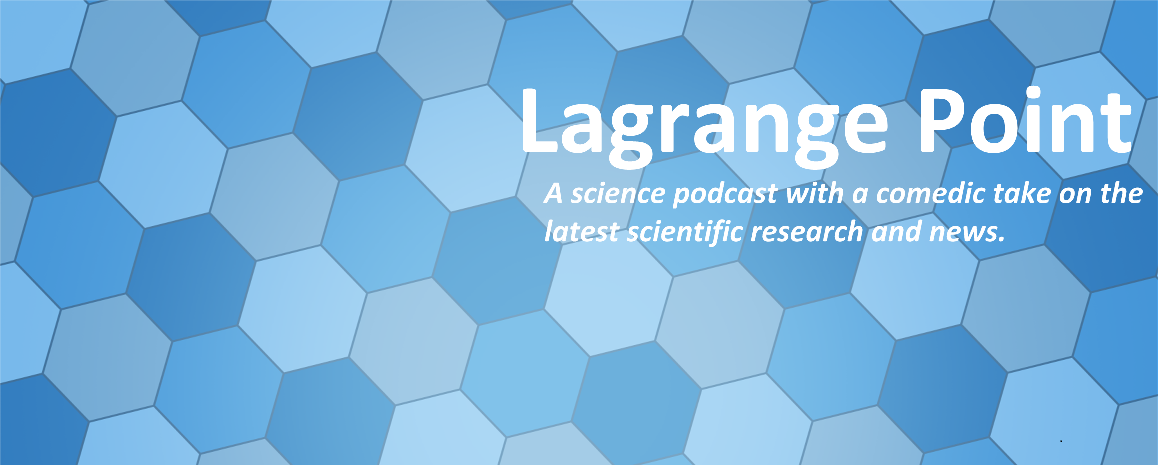Episodes

Monday Sep 23, 2019
Monday Sep 23, 2019
Is it possible to stop Alzheimer's in it's tracks? How does the formation of plaques on your brain cells lead to Alzheimer's. Does the your brain immune cells fighting back against plaques lead to Alzheimers? Amino acids in the brain tying themselves into knots, can lead to super strong sealed zippers forming which dry out proteins, damage neurons and eventually can lead to diseases like Alzheimer's. An enzyme missing a repair or two over 60 years can lead to build up of kinked amino acids chains which can lead to neuron-degenerative diseases. What causes a cell to eat itself? Well its actually a pretty healthy thing to do. If a brain cell doesn't eat itself at the right time, well it can lead to a whole bunch of diseases.
- Rebeccah A. Warmack, David R. Boyer, Chih-Te Zee, Logan S. Richards, Michael R. Sawaya, Duilio Cascio, Tamir Gonen, David S. Eisenberg, Steven G. Clarke. Structure of amyloid-β (20-34) with Alzheimer’s-associated isomerization at Asp23 reveals a distinct protofilament interface. Nature Communications, 2019; 10 (1) DOI: 10.1038/s41467-019-11183-z
- Elizabeth Spangenberg, Paul L. Severson, Lindsay A. Hohsfield, Joshua Crapser, Jiazhong Zhang, Elizabeth A. Burton, Ying Zhang, Wayne Spevak, Jack Lin, Nicole Y. Phan, Gaston Habets, Andrey Rymar, Garson Tsang, Jason Walters, Marika Nespi, Parmveer Singh, Stephanie Broome, Prabha Ibrahim, Chao Zhang, Gideon Bollag, Brian L. West, Kim N. Green. Sustained microglial depletion with CSF1R inhibitor impairs parenchymal plaque development in an Alzheimer’s disease model. Nature Communications, 2019; 10 (1) DOI: 10.1038/s41467-019-11674-z
- Yi Yang, Thea L. Willis, Robert W. Button, Conor J. Strang, Yuhua Fu, Xue Wen, Portia R. C. Grayson, Tracey Evans, Rebecca J. Sipthorpe, Sheridan L. Roberts, Bing Hu, Jianke Zhang, Boxun Lu, Shouqing Luo. Cytoplasmic DAXX drives SQSTM1/p62 phase condensation to activate Nrf2-mediated stress response. Nature Communications, 2019; 10 (1) DOI: 10.1038/s41467-019-11671-2

Monday Sep 09, 2019
Monday Sep 09, 2019
Growing enough food to feed the planet is a challenge that will only get harder as the climate changes. So how do farmers and scientists work together to make crops more sustainable, more resilient to disease, and use less herbicides? With genetic engineering, one of the worlds most important crops, rice, can be made even tougher. Using a two type bait gene, rice can be engineered to fight off fungus like rice blast. If you have to spray with herbicides, when should you do it? Well you need to pay attention to the circadian rhythm of the plants.
- Freya A Varden, Hiromasa Saitoh, Kae Yoshino, Marina Franceschetti, Sophien Kamoun, Ryohei Terauchi, Mark J. Banfield. Cross-reactivity of a rice NLR immune receptor to distinct effectors from the rice blast pathogen Magnaporthe oryzae provides partial disease resistance. Journal of Biological Chemistry, 2019; jbc.RA119.007730 DOI: 10.1074/jbc.RA119.007730
- Fiona E. Belbin, Gavin J. Hall, Amelia B. Jackson, Florence E. Schanschieff, George Archibald, Carl Formstone, Antony N. Dodd. Plant circadian rhythms regulate the effectiveness of a glyphosate-based herbicide. Nature Communications, 2019; 10 (1) DOI: 10.1038/s41467-019-11709-5

Monday Sep 02, 2019
Episode 342 - Better chemistry and physics in everyday objects
Monday Sep 02, 2019
Monday Sep 02, 2019
How can we use physics and chemistry to help improve our everyday objects? Melting ice is very important for airplanes and air-conditioners. How can you melt unwanted on objects ice more efficiently? Ice on an airplane wing can be dangerous, so how do we melt it more efficiently. Flame retardants are important to stop fire spreading, but how do we make them safer and environmentally friendly? Flame retardants often rely on petroleum which are not environmental friendly. How can we stop flame retardants leeching into the environment or into our households? How do you get white paint without relying on environmentally intensive additives. What can beetles and recycle plastic teach us about making whiter paint.
References:
- S. Chavan, T. Foulkes, Y. Gurumukhi, K. Boyina, K. F. Rabbi, N. Miljkovic. Pulse interfacial defrosting. Applied Physics Letters, 2019; 115 (7): 071601 DOI: 10.1063/1.5113845
- Stephanie L. Burg, Adam Washington, David M. Coles, Antonino Bianco, Daragh McLoughlin, Oleksandr O. Mykhaylyk, Julie Villanova, Andrew J. C. Dennison, Christopher J. Hill, Pete Vukusic, Scott Doak, Simon J. Martin, Mark Hutchings, Steven R. Parnell, Cvetelin Vasilev, Nigel Clarke, Anthony J. Ryan, Will Furnass, Mike Croucher, Robert M. Dalgliesh, Sylvain Prevost, Rajeev Dattani, Andrew Parker, Richard A. L. Jones, J. Patrick A. Fairclough, Andrew J. Parnell. Liquid–liquid phase separation morphologies in ultra-white beetle scales and a synthetic equivalent. Communications Chemistry, 2019; 2 (1) DOI: 10.1038/s42004-019-0202-8
- American Chemical Society. (2019, August 26). Flame retardants -- from plants. ScienceDaily. Retrieved August 31, 2019 from www.sciencedaily.com/releases/2019/08/190826092330.htm

Monday Aug 26, 2019
Episode 341 - Forming, Saving and preserving new memories
Monday Aug 26, 2019
Monday Aug 26, 2019
Your brain uses proteins synthesis and redundancy to help form and keep memories. Intricate biochemistry helps your neurons connect to each other to form new memories. Forming new memories is a sticky situation. Keeping them stuck together over time in a long lasting memory relies on protein synthesis. Its important not just to have strong connections between neurons to form memories, you also need spares. By having redundancy and backups it means that you can still remember a key memory if one of those connections fails.
References
- Lenzie Ford et al. CPEB3 inhibits translation of mRNA targets by localizing them to P bodies. PNAS, 2019 DOI: 10.1073/pnas.1815275116
- Walter G. Gonzalez, Hanwen Zhang, Anna Harutyunyan, Carlos Lois. Persistence of neuronal representations through time and damage in the hippocampus. Science, 2019: Vol. 365, Issue 6455, pp. 821-825 DOI: 10.1126/science.aav9199
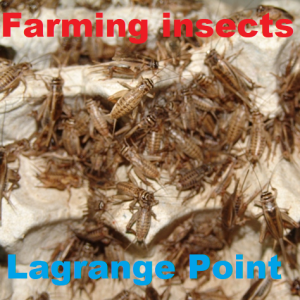
Monday Aug 19, 2019
Episode 340 - Insects revolutionizing agriculture
Monday Aug 19, 2019
Monday Aug 19, 2019
Insects are often thought of as the enemy of farmers, but they can help improve farming. From helpful worm pheromones, to farming crickets and hungry termites. Worms can help boost the resilience of crops like wheat, corn and maize to common threats. Worm pheromones help plants fight back against bacteria, viral and fungal invaders. If insects are the super food of the future, how do you successfully farm them on a large scale? What nutrient rich feed do insect farms need to give their herds? If you are growing crickets and locusts do they need different food? What food is best for termites and how can they be used to help better manage forest?
References:
- Daniel F. Klessig, Murli Manohar, Shine Baby, Aline Koch, Wiseborn B. Danquah, Emily Luna, Hee‐Jin Park, Judith M. Kolkman, B. Gillian Turgeon, Rebecca Nelson, Jan E. Leach, Valerie M. Williamson, Karl‐Heinz Kogel, Aardra Kachroo, Frank C. Schroeder. Nematode ascaroside enhances resistance in a broad spectrum of plant–pathogen systems. Journal of Phytopathology, 2019; 167 (5): 265 DOI: 10.1111/jph.12795
- P. Straub, C.M. Tanga, I. Osuga, W. Windisch, S. Subramanian. Experimental feeding studies with crickets and locusts on the use of feed mixtures composed of storable feed materials commonly used in livestock production. Animal Feed Science and Technology, 2019; 255: 114215 DOI: 10.1016/j.anifeedsci.2019.114215
- Martin F. Jurgensen, Chris A. Miller, Carl T. Trettin, Deborah S. Page-Dumroese. Bedding of Wetland Soil: Effects of Bed Height and Termite Activity on Wood Decomposition. Soil Science Society of America Journal, 2019; 0 (0): 0 DOI: 10.2136/sssaj2018.12.0492
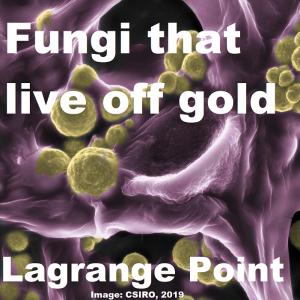
Monday Aug 12, 2019
Monday Aug 12, 2019
To celebrate National Science Week in Australia we are turning our attention to Australian research on the global scale. This week it means tales from microbiology. Stories of how life can survive or sometimes thrive in strange situations. Whether it be Fungi that eat gold, or bacteria chewing deadly gas, microbiology is always full of surprises. How do the tiniest parts of the food-web of our oceans hunt for food in the swirling of stagnant currents of the ocean? How do bacteria turn deadly gas into a food source? Is the secret to tuberculosis's resistance its ability to survive off deadly gas? How do bacteria turn carbon monoxide and hydrogen into something palatable?
References:
- Cordero, P. R., Bayly, K., Leung, P. M., Huang, C., Islam, Z. F., Schittenhelm, R. B., . . . Greening, C. (2019). Atmospheric carbon monoxide oxidation is a widespread mechanism supporting microbial survival. The ISME Journal. doi:10.1038/s41396-019-0479-8
- Islam, Z. F., Cordero, P. R., Feng, J., Chen, Y., Bay, S. K., Jirapanjawat, T., . . . Greening, C. (2018). Two Chloroflexi classes independently evolved the ability to persist on atmospheric hydrogen and carbon monoxide. The ISME Journal. doi:10.1101/457697
- Lehmann, E. (n.d.). Gold-coated fungi are the new gold diggers. Retrieved from https://www.csiro.au/en/News/News-releases/2019/Gold-coated-fungi-are-the-new-gold-diggers
- Bohu, T., Anand, R., Noble, R., Lintern, M., Kaksonen, A. H., Mei, Y., . . . Verrall, M. (2019). Evidence for fungi and gold redox interaction under Earth surface conditions. Nature Communications, 10(1). doi:10.1038/s41467-019-10006-5
- Holland, D., & University of Melbourne. (2019, August 05). The superheroes of nutrient detection living in our oceans. Retrieved from https://pursuit.unimelb.edu.au/articles/the-superheroes-of-nutrient-detection-living-in-our-oceans#
- Brumley, D. R., Carrara, F., Hein, A. M., Yawata, Y., Levin, S. A., & Stocker, R. (2019). Bacteria push the limits of chemotactic precision to navigate dynamic chemical gradients. Proceedings of the National Academy of Sciences, 116(22), 10792-10797. doi:10.1073/pnas.1816621116
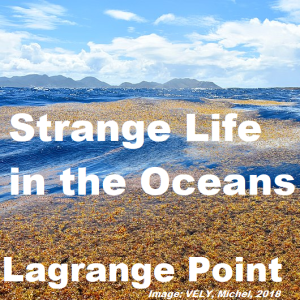
Sunday Jul 14, 2019
Sunday Jul 14, 2019
Water, water everywhere but not a drop to drink or nutrient for that matter. The Ocean can sometimes be a inhospitable place with barely any nutrients to survive off. Other times it can be home to large ocean spanning algae blooms. The oceans from the Pacific to the Atlantic can hold lots of secrets (even fresh water) beneath the surface. This week we look at 3 different papers which outline strange parts of the ocean, from large algae blooms to hidden aquifers.
References:
- Greta Reintjes, Halina E. Tegetmeyer, Miriam Bürgisser, Sandi Orlić, Ivo Tews, Mikhail Zubkov, Daniela Voß, Oliver Zielinski, Christian Quast, Frank Oliver Glöckner, Rudolf Amann, Timothy G. Ferdelman, Bernhard M. Fuchs. On-Site Analysis of Bacterial Communities of the Ultraoligotrophic South Pacific Gyre. Applied and Environmental Microbiology, 2019; 85 (14) DOI: 10.1128/AEM.00184-19
- Mengqiu Wang, Chuanmin Hu, Brian B. Barnes, Gary Mitchum, Brian Lapointe, Joseph P. Montoya. The great Atlantic Sargassum belt. Science, 2019; 365 (6448): 83 DOI: 10.1126/science.aaw7912
- Chloe Gustafson, Kerry Key, Rob L. Evans. Aquifer systems extending far offshore on the U.S. Atlantic margin. Scientific Reports, 2019; 9 (1) DOI: 10.1038/s41598-019-44611-7
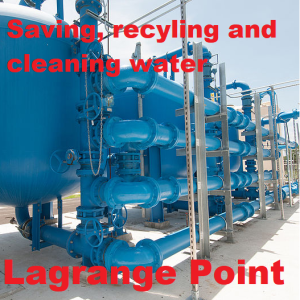
Monday May 13, 2019
Episode 326 - Capturing, reusing, recycling and cleaning water.
Monday May 13, 2019
Monday May 13, 2019
Water is essential for life, but we need to take care of the complete water cycle. Treating waste water can help remove harmful pollutants from cosmetics and medication. Industrial processes and landfill can also make super salty water, that we need to clean before releasing. Without good water management then we can end up without water in times of drought, and in times of flood more water than we can handle. This week we find out about ways to better manage the most precious of resources, water.
References:
- Qian Yang, Bridget R Scanlon. How much water can be captured from flood flows to store in depleted aquifers for mitigating floods and droughts? A case study from Texas, US. Environmental Research Letters, 2019; 14 (5): 054011 DOI: 10.1088/1748-9326/ab148e
- Rui Zhao, Tingting Ma, Shuying Li, Yuyang Tian, Guangshan Zhu. Porous Aromatic Framework Modified Electrospun Fiber Membrane as a Highly Efficient and Reusable Adsorbent for Pharmaceuticals and Personal Care Products Removal. ACS Applied Materials & Interfaces, 2019; 11 (18): 16662 DOI: 10.1021/acsami.9b04326
- Chanhee Boo, Robert K. Winton, Kelly M. Conway, Ngai Yin Yip. Membrane-less and Non-evaporative Desalination of Hypersaline Brines by Temperature Swing Solvent Extraction. Environmental Science & Technology Letters, 2019; DOI: 10.1021/acs.estlett.9b00182
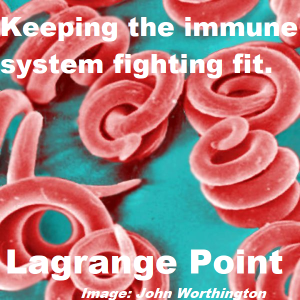
Monday Apr 22, 2019
Lagrange Point Episode 323 - Keeping your immune system in fighting shape
Monday Apr 22, 2019
Monday Apr 22, 2019
How can we keep our immune systems in fighting shape? What happens when our immune systems are responding well or are missing key genes? is there targeted gene therapies that can be used to help save lives of those most at risk from infection? How does our body hunt down and stop Listeria in it's tracks? Plus undercooked wild game or pork can lead to parasitic infections, but how does the body fight back?
References:
- E Mamcarz et al. Lentiviral gene therapy with low dose busulfan for infants with X-SCID. The New England Journal of Medicine, April 17, 2019; DOI: 10.1056/NEJMoa1815408
- Kazuhito Sai, Cameron Parsons, John S. House, Sophia Kathariou, Jun Ninomiya-Tsuji. Necroptosis mediators RIPK3 and MLKL suppress intracellular Listeria replication independently of host cell killing. The Journal of Cell Biology, 2019; jcb.201810014 DOI: 10.1083/jcb.201810014
- Nicola Steel, Aduragbemi A. Faniyi, Sayema Rahman, Stefanie Swietlik, Beata I. Czajkowska, Bethany T. Chan, Alexander Hardgrave, Anthony Steel, Tim D. Sparwasser, Mushref B. Assas, Richard K. Grencis, Mark A. Travis, John J. Worthington. TGFβ-activation by dendritic cells drives Th17 induction and intestinal contractility and augments the expulsion of the parasite Trichinella spiralis in mice. PLOS Pathogens, 2019; 15 (4): e1007657 DOI: 10.1371/journal.ppat.1007657
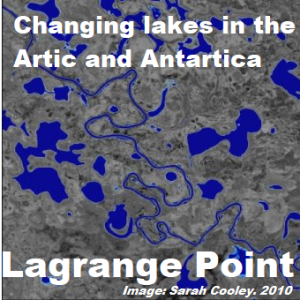
Monday Mar 25, 2019
Monday Mar 25, 2019
Trying to understand how the climate will change is difficult. For every big event like the break up of an ice shelf, there are thousands of little factors that play a role. Sometimes this little things turn into a torrent of a river, or a calm lake which can cause an entire continent to bend and flex. We find out about research into the Arctic Tundra and it's changing lakes which are one of the largest natural emitters of greenhouse gases. Plus ways to capture greenhouse gases and store them safely.
References:
- Alison F. Banwell, Ian C. Willis, Grant J. Macdonald, Becky Goodsell, Douglas R. MacAyeal. Direct measurements of ice-shelf flexure caused by surface meltwater ponding and drainage. Nature Communications, 2019; 10 (1) DOI: 10.1038/s41467-019-08522-5
- Sarah W. Cooley, Laurence C. Smith, Jonathan C. Ryan, Lincoln H. Pitcher, Tamlin M. Pavelsky. Arctic‐Boreal lake dynamics revealed using CubeSat imagery. Geophysical Research Letters, 2019; DOI: 10.1029/2018GL081584
- Fundação de Amparo à Pesquisa do Estado de São Paulo. (2019, February 13). Carbon gas storage cavern is the best way to obtain clean energy from a fossil fuel. ScienceDaily. Retrieved February 15, 2019 from www.sciencedaily.com/releases/2019/02/190213124358.htm
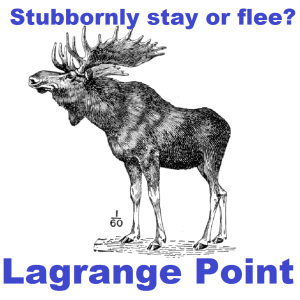
Monday Mar 18, 2019
Episode 318 - Stubborn Moose, repulsive smells and Otters with tools
Monday Mar 18, 2019
Monday Mar 18, 2019
We recap March Mamma Madness Round 1, and look at some latest science stories that relate. From what happens inside your brain when you smell a repulsive smell, to making the right call on fleeing or standing your ground. Plus we look at using archaeological techniques to help understand the history of animal tool use like with otters.
References:
- Ahmed A. M. Mohamed, Tom Retzke, Sudeshna Das Chakraborty, Benjamin Fabian, Bill S. Hansson, Markus Knaden, Silke Sachse. Odor mixtures of opposing valence unveil inter-glomerular crosstalk in the Drosophila antennal lobe. Nature Communications, 2019; 10 (1) DOI: 10.1038/s41467-019-09069-1
- Michael Haslam, Jessica Fujii, Sarah Espinosa, Karl Mayer, Katherine Ralls, M. Tim Tinker, Natalie Uomini. Wild sea otter mussel pounding leaves archaeological traces. Scientific Reports, 2019; 9 (1) DOI: 10.1038/s41598-019-39902-y
- B. A. Oates, J. A. Merkle, M. J. Kauffman, S. R. Dewey, M. D. Jimenez, J. M. Vartanian, S. A. Becker, J. R. Goheen. Antipredator response diminishes during periods of resource deficit for a large herbivore. Ecology, 2019; e02618 DOI: 10.1002/ecy.2618
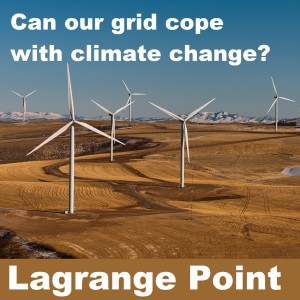
Monday Mar 11, 2019
Monday Mar 11, 2019
One of the futuristic technologies always touted is Hydrogen fuel cells. So why are they not everywhere? we look at the challenges in production,storage, and use of hydrogen from cars to factories. Plus we examine if our electricity grid will be able to cope with the drastic weather condition changes from climate change in the year 2100.
References:
- Yinjun Xie, Peng Hu, Yehoshoa Ben-David, David Milstein. A Reversible Liquid Organic Hydrogen Carrier System Based on Methanol-Ethylenediamine and Ethylene Urea. Angewandte Chemie International Edition, 2019; DOI: 10.1002/anie.201901695
- Gunther Glenk, Stefan Reichelstein. Economics of converting renewable power to hydrogen. Nature Energy, 2019; DOI: 10.1038/s41560-019-0326-1
- Smail Kozarcanin, Hailiang Liu, Gorm Bruun Andresen. 21st Century Climate Change Impacts on Key Properties of a Large-Scale Renewable-Based Electricity System. Joule, 2019; DOI: 10.1016/j.joule.2019.02.001
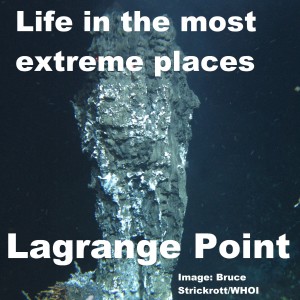
Monday Feb 18, 2019
Episode 314 - Ancient life and life in extreme places
Monday Feb 18, 2019
Monday Feb 18, 2019
From the bottom of the ocean, to the earliest days of the earth, life has managed to not just survive but thrive. We look at several cases which change our understanding of the earliest life on earth and just what that might mean for understanding life on this planet and beyond. From moving life fossilised in mud, to using isotopes to study metabolism and discovering whole new methods of getting food, life continues to astound researchers with its inventiveness.
References:
- Min Sub Sim, Hideaki Ogata, Wolfgang Lubitz, Jess F. Adkins, Alex L. Sessions, Victoria J. Orphan, Shawn E. McGlynn. Role of APS reductase in biogeochemical sulfur isotope fractionation. Nature Communications, 2019; 10 (1) DOI: 10.1038/s41467-018-07878-4
- Abderrazak El Albani, M. Gabriela Mangano, Luis A. Buatois, Stefan Bengtson, Armelle Riboulleau, Andrey Bekker, Kurt Konhauser, Timothy Lyons, Claire Rollion-Bard, Olabode Bankole, Stellina Gwenaelle Lekele Baghekema, Alain Meunier, Alain Trentesaux, Arnaud Mazurier, Jeremie Aubineau, Claude Laforest, Claude Fontaine, Philippe Recourt, Ernest Chi Fru, Roberto Macchiarelli, Jean Yves Reynaud, François Gauthier-Lafaye, Donald E. Canfield. Organism motility in an oxygenated shallow-marine environment 2.1 billion years ago. Proceedings of the National Academy of Sciences, 2019; 201815721 DOI: 10.1073/pnas.1815721116
- Stephanie A. Carr, Sean P. Jungbluth, Emiley A. Eloe-Fadrosh, Ramunas Stepanauskas, Tanja Woyke, Michael S. Rappé, Beth N. Orcutt. Carboxydotrophy potential of uncultivated Hydrothermarchaeota from the subseafloor crustal biosphere. The ISME Journal, 2019; DOI: 10.1038/s41396-019-0352-9
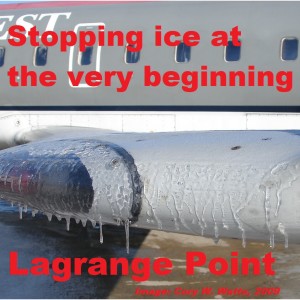
Monday Feb 04, 2019
Monday Feb 04, 2019
Water is essential for life, but if its too cold it can cause havoc on infrastructure. If it's too hot there is not enough to go around. If it's too salty its not good for organic material, and if its saturated with CO2 its even more dangerous. So how do we keep water working for us as our climate changes and we have more droughts, more polar vortexes and more power plants? This week we find out about advances in chemistry and materials science that can help make better use of water.
References:
- Peyman Irajizad, Abdullah Al-Bayati, Bahareh Eslami, Taha Shafquat, Masoumeh Nazari, Parham Jafari, Varun Kashyap, Ali Masoudi, Daniel Araya, Hadi Ghasemi. Stress-Localized Durable Icephobic Surfaces. Materials Horizons, 2019; DOI: 10.1039/C8MH01291A
- Peyman Irajizad, Abdullah Al-Bayati, Bahareh Eslami, Taha Shafquat, Masoumeh Nazari, Parham Jafari, Varun Kashyap, Ali Masoudi, Daniel Araya, Hadi Ghasemi. Stress-Localized Durable Icephobic Surfaces. Materials Horizons, 2019; DOI: 10.1039/C8MH01291A
- Neil Williams et al. CO2 Capture via Crystalline Hydrogen-Bonded Bicarbonate Dimers. Chem, 2019 DOI: 10.1016/j.chempr.2018.12.025
- Image: Cory W Watts, 2009

Monday Jan 21, 2019
Monday Jan 21, 2019
A brain injury like a stroke or a neuro degenerative condition like Huntingdon's or Parkinson’s disease can be a long and arduous ordeal. It can be difficult to diagnose and there are no clear treatments, but scientists are working hard to solve it. We find out about the important role Glial cells play in supporting neurons and how things can go wrong if they are disrupted. We also find out about ways to use the abundance of Glial cells to make new neurons. Plus we get a better understanding of cell death and repair and the roll proteins can play in slowing down those processes to give your brain time to recover.
- Mikhail Osipovitch, Andrea Asenjo Martinez, John N. Mariani, Adam Cornwell, Simrat Dhaliwal, Lisa Zou, Devin Chandler-Militello, Su Wang, Xiaojie Li, Sarah-Jehanne Benraiss, Robert Agate, Andrea Lampp, Abdellatif Benraiss, Martha S. Windrem, Steven A. Goldman. Human ESC-Derived Chimeric Mouse Models of Huntington’s Disease Reveal Cell-Intrinsic Defects in Glial Progenitor Cell Differentiation. Cell Stem Cell, 2018; DOI: 10.1016/j.stem.2018.11.010
- Walter and Eliza Hall Institute. (2018, December 20). Parkinson's disease protein buys time for cell repair. ScienceDaily. Retrieved January 5, 2019 from www.sciencedaily.com/releases/2018/12/181220080000.htm
- Penn State. (2018, November 5). New gene therapy reprograms brain glial cells into neurons. ScienceDaily. Retrieved January 5, 2019 from www.sciencedaily.com/releases/2018/11/181105122433.htm

Monday Dec 31, 2018
Episode 307 - Ancient druidic treatments, wasp venom and peptide cages
Monday Dec 31, 2018
Monday Dec 31, 2018
The arms race against antibiotic resistant bacteria continues. As the world faces down this challenge, we turn to stranger and stranger places for treatment. So how can you turn ancient druidic treatments into modern new antibiotics? How do you make wasp venom actually a useful treatment? Can you trap bacteria inside a cage and just starve them to this? This week we find out about the fight back against bacteria.
References:
- Luciana Terra, Paul J. Dyson, Matthew D. Hitchings, Liam Thomas, Alyaa Abdelhameed, Ibrahim M. Banat, Salvatore A. Gazze, Dušica Vujaklija, Paul D. Facey, Lewis W. Francis, Gerry A. Quinn. A Novel Alkaliphilic Streptomyces Inhibits ESKAPE Pathogens. Frontiers in Microbiology, 2018; 9 DOI: 10.3389/fmicb.2018.02458
- Sina Krokowski, Damián Lobato-Márquez, Arnaud Chastanet, Pedro Matos Pereira, Dimitrios Angelis, Dieter Galea, Gerald Larrouy-Maumus, Ricardo Henriques, Elias T. Spiliotis, Rut Carballido-López, Serge Mostowy. Septins Recognize and Entrap Dividing Bacterial Cells for Delivery to Lysosomes. Cell Host & Microbe, 2018; 24 (6): 866 DOI: 10.1016/j.chom.2018.11.005
- Massachusetts Institute of Technology. (2018, December 7). Engineers repurpose wasp venom as an antibiotic drug. ScienceDaily. Retrieved December 29, 2018 from www.sciencedaily.com/releases/2018/12/181207112651.htm
Antibiotics from druidic recipes in the Irish countryside.

Monday Dec 10, 2018
Episode 304 - Flexible electronics, graphene transfer and paper sensors
Monday Dec 10, 2018
Monday Dec 10, 2018
Flexible electronics and phones sound like science fiction,but materials engineers are turning them into science fact. We find out about projects from across the world to make it a reality. From Australian flexible screens, to MIT's incredibly thin and exotic semiconductors to Purdue's paper based circuits for medical applications.
References:
- Linglong Zhang, Ankur Sharma, Yi Zhu, Yuhan Zhang, Bowen Wang, Miheng Dong, Hieu T. Nguyen, Zhu Wang, Bo Wen, Yujie Cao, Boqing Liu, Xueqian Sun, Jiong Yang, Ziyuan Li, Arara Kar, Yi Shi, Daniel Macdonald, Zongfu Yu, Xinran Wang, Yuerui Lu. Efficient and Layer-Dependent Exciton Pumping across Atomically Thin Organic-Inorganic Type-I Heterostructures. Advanced Materials, 2018; 30 (40): 1803986 DOI: 10.1002/adma.201803986
- Wei Kong, Huashan Li, Kuan Qiao, Yunjo Kim, Kyusang Lee, Yifan Nie, Doyoon Lee, Tom Osadchy, Richard J Molnar, D. Kurt Gaskill, Rachael L. Myers-Ward, Kevin M. Daniels, Yuewei Zhang, Suresh Sundram, Yang Yu, Sang-hoon Bae, Siddharth Rajan, Yang Shao-Horn, Kyeongjae Cho, Abdallah Ougazzaden, Jeffrey C. Grossman, Jeehwan Kim. Polarity governs atomic interaction through two-dimensional materials. Nature Materials, 2018; DOI: 10.1038/s41563-018-0176-4
- Behnam Sadri, Debkalpa Goswami, Marina Sala de Medeiros, Aniket Pal, Beatriz Castro, Shihuan Kuang, Ramses V. Martinez. Wearable and Implantable Epidermal Paper-Based Electronics. ACS Applied Materials & Interfaces, 2018; 10 (37): 31061 DOI: 10.1021/acsami.8b11020
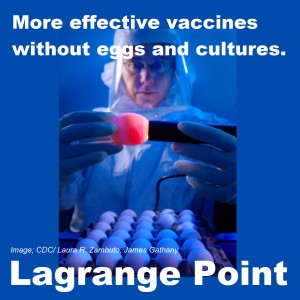
Monday Nov 19, 2018
Episode 301 - More effective Vaccines.
Monday Nov 19, 2018
Monday Nov 19, 2018
Using vaccines to tackle a pandemic is a serious challenge for health agencies. So how do we make vaccines more effective? Can we remove the requirement for a cold chain from lab to clinic? We also find out ways to boost the performance of a flu shot with a simple cream. Plus an update on a new vaccine types to prevent Ebola.
References:
- Jing Zou, Xuping Xie, Huanle Luo, Chao Shan, Antonio E. Muruato, Scott C. Weaver, Tian Wang, Pei-Yong Shi. A single-dose plasmid-launched live-attenuated Zika vaccine induces protective immunity. EBioMedicine, 2018; DOI: 10.1016/j.ebiom.2018.08.056
- Ami Patel et al. Protective Efficacy and Long-Term Immunogenicity in Cynomolgus Macaques by Ebola Virus Glycoprotein Synthetic DNA Vaccines. Journal of Infectious Diseases, 2018 DOI: 10.1093/infdis/jiy537
- NIH/National Institute of Allergy and Infectious Diseases. (2018, September 6). Clinical trial testing topical cream plus influenza vaccine in progress: Cream regimen could boost immunity. ScienceDaily. Retrieved October 13, 2018 from www.sciencedaily.com/releases/2018/09/180906101347.htm
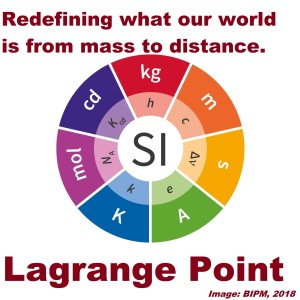
Monday Nov 05, 2018
Episode 299 - Redefining the kilogram a history of measurement
Monday Nov 05, 2018
Monday Nov 05, 2018
Have you ever stopped to wonder what ruler rules them all? How we set the standard for height, for weight, for everything around us? What if you weighed one thing one day, and travelled to another country and suddenly gained 5 kgs or had to use an entirely different weight system? What if you weighed one thing this week and more the next? This week we find out the history measurement systems, how we've standardised them and come up with unique and repeatable measures that don't rely on artefacts (real and metaphorically).
References:
- Suplee, C., Lauren Lee, J., Gillespie, A., Porter, G., Stein, B., & Phillips, B. et al. (2018). A Turning Point for Humanity: Redefining the World’s Measurement System. Retrieved from https://www.nist.gov/si-redefinition/turning-point-humanity-redefining-worlds-measurement-system
- Jabbour, Z., & Yaniv, S. (2001). The kilogram and measurements of mass and force. Journal of Research of the National Institute of Standards and Technology, 106(1), 25. doi:10.6028/jres.106.003
- Newell, D. B. (2014). A more fundamental International System of Units. Physics Today, 67(7), 35-41. doi:10.1063/pt.3.2448
- Bureau International des Poids et Mesures. (n.d.). On the future revision of the SI. Retrieved from https://www.bipm.org/en/measurement-units/rev-si/
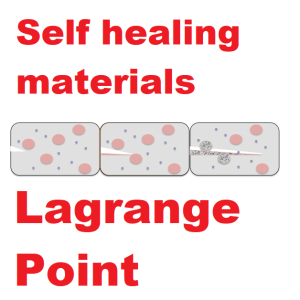
Monday Oct 29, 2018
Episode 298 - Self healing materials, scratch tests and the crockmeter
Monday Oct 29, 2018
Monday Oct 29, 2018
Self healing materials sound like science fiction, but how can we turn them into a reality? What does self healing even mean? We dive into the material science of self healing systems to find out what mechanism are used and how you can make a material heal. Plus we find out how you can make a self healing material out of common plastics using one of the weakest forces. Plus how scientists test and assess different materials including using....a crockmeter.
References:
- Marek W. Urban, Dmitriy Davydovich, Ying Yang, Tugba Demir, Yunzhi Zhang, Leah Casabianca. Key-and-lock commodity self-healing copolymers. Science, 2018; 362 (6411): 220 DOI: 10.1126/science.aat2975
- Linqian Feng, Beatrice (Nadia) Benhamida, Chen-Yuan Lu, Li Piin Sung, Pierre Morel, Andrew T. Detwiler, Jon M. Skelly, Leslie T. Baker, Deepanjan Bhattacharya. Fundamentals and characterizations of scratch resistance on automotive clearcoats. Progress in Organic Coatings, 2018; 125: 339 DOI: 10.1016/j.porgcoat.2018.09.011
